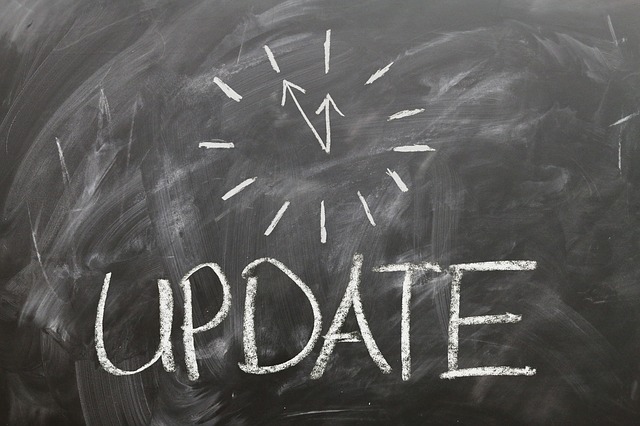Three new interim final rules (IFRs) for the Paycheck Protection Program (PPP) have been released from the Small Business Administration (SBA) and Treasury in response to the changes and second round of funding enacted by the relief portion of the Consolidated Appropriations Act signed at the end of December.
Here’s the breakdown on the first two IFRs.
Changes in provisions for first-draw PPP loans
First-time borrowers of PPP forgivable loans received consolidated rules in the IFR “Business Loan Program Temporary Changes; Paycheck Protection Program as Amended” as well as an outline of changes made by the Act. Here’s what this rule clarified:
- The authority to make PPP loans was extended to March 31, 2021.
- Eligibility was expanded to:
- Businesses that are also eligible for other SBA 7(a) loans with 500 or fewer employees.
- Independent contractors, sole proprietors, certain self-employed individuals.
- Nonprofits, including churches.
- Accommodation and food services – Fewer than 500 employees per location.
- Business leagues, chambers of commerce, visitor’s bureaus and others (not sports leagues) that fall under the Sec. 501(c)(6) designation – Must have fewer than 300 employees, less than 15% of receipts from lobbying, and less than 15% of activity and less than $1 million spent toward lobbying.
- Certain news organizations and nonprofit public broadcasting organizations with no more than 500 employees.
- Publicly traded companies or businesses with direct or indirect control by the president, vice president, head of executive departments, or members of Congress (including spouses) are now ineligible.
- Qualifying payroll documentation may include payroll records; payroll tax filings; Form 1099-MISC; Form 1040, Schedule C or Schedule F; sole proprietorship income and expenses; bank records.
- Hotels and restaurants can receive loans up to 3.5 times their average payroll cost (2.5 times for every other industry).
- Maximum loan amount is $10 million.
- Additional eligible costs include COVID-related worker protection and facility modifications; property damage costs related to public disturbances; suppliers expenditures essential to operations; operating expenditures for software/cloud computing services essential for running the business.
- First-draw loans of $150,000 or less can use a simplified forgiveness application (form is due to be released by Jan. 20).
Additionally, specific funds were set aside for minority, underserved, veteran, and women-owned businesses. When the PPP portal reopens on Monday, Jan. 11, lenders for underserved communities will have exclusive access for two days for first-draw loans and will be able to offer second-draw loans on Wednesday, Jan. 13. The portal will be open to all borrowers following these exclusive access days.
New provisions for second-draw PPP loans
In the IFR “Business Loan Program Temporary Changes; Paycheck Protection Program Second Draw Loans,” much-awaited guidance was released for those looking to apply for a second PPP loan. Here’s what it said:
Eligible borrowers must
- Have 300 or fewer employees
- Have used or will use the full amount of their first PPP loan on or before expected date of second loan disbursement, and the full amount must have been used on eligible expenses.
- Have had at least 25% reduction in revenue for all or part of 2020 compared to the same time in 2019. Gross receipts can be used for calculation, or annual tax forms can be used for those in operation for all four quarters of 2020.
- The gross receipts used for calculation were defined to include all revenue regardless of form in which it was received or accrued or the source.
- First draw PPP loans should not be included in 2020 gross receipts.
Third interim final rule clarifications
In an IFR released on Jan. 19, the SBA and Treasury made a few notable changes and clarifications to the PPP that apply regardless of which type of forgiveness application a business uses. Here are the key points:
- Alternative covered payroll periods are no longer available – This is a break from the previous PPP program that allowed businesses with biweekly or more frequent payroll schedules to use a covered period that aligns with their payroll schedule vs the date of loan disbursement.
- Covered periods begin on the date of loan disbursement – This isn’t new, but a reminder to businesses that you have 8 or 24 weeks from date of loan disbursement to use as your covered period.
- Be aware of cash compensation related to ERCs – If you’re considering pairing your PPP loan with an employee retention credit (ERC), be mindful of what wages you’re using for which program. Read more about the ERC here.
- Watch your owner cash compensation limit – As a reminder, self-employed individuals, general partners, or owner-employees with at least a 5% stake are limited in forgiveness on their compensation. You can use 2.5 months’ worth of compensation during the year used to calculate your PPP loan amount with a cap at $20,833 per individual across all businesses.
- Use a separate forgiveness application for each loan – If you have multiple entities and multiple PPP loans, each loan needs its own forgiveness application, including second-draw loans.
Additionally, the three forgiveness applications have been updated to account for changes in these IFRS. Here are the links:
New PPP application forms have been released for first or second-draw loans. We will continue to update you as further guidance becomes available. Contact us for assistance with your application for a first or second-draw loan or forgiveness.
